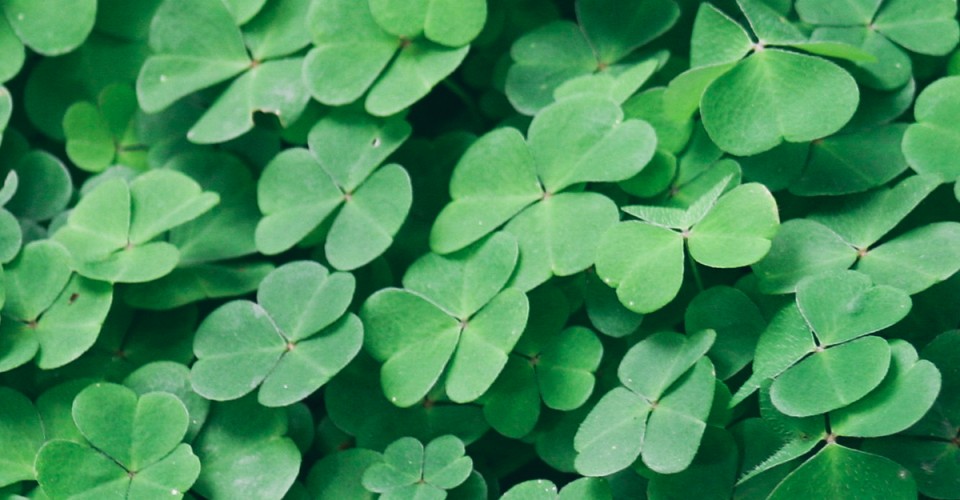A healthy lawn can be beautiful and is arguably the source of neighbor envy. Considering that lawn care is a $25 billion industry, Americans certainly appreciate lush, green grass. But lawns are notoriously high maintenance with high water needs, regular fertilization, edging, trimming and mowing. You might not know it but your neighbors with beautifully perfect green grass are probably paying a lot of money for it.
There is a new trend afoot that is bringing attention to the fact homeowners are interested in not spending so much time and money on their lawns. Raised consciousness regarding water consumption, new city ordinances about water usage, as well as an increased knowledge about fertilizer trickling into our rivers and watersheds have inspired homeowners to turn to other solutions.
According to CloverLawn.org, converting your current lawn into a clover lawn isn’t difficult. In fact you might already have clover growing in your grass right now. “For lawns, the most popular is Dutch White Clover (Trifolium repens) because it is relatively low growing, tolerates close mowing, and out competes other foreign weeds.”
Clover for your lawn
The next idea for your lawn may not be a grass at all. Clover is part of the legume family and is not a grass. According to Farmer’s Almanac, “clover has the ability to convert nitrogen into fertilizer using bacteria in it’s root system, practically eliminating the need for additional fertilization.”
Benefits of clover
Needs little water: While grass lawns need about 1/2′ to 1″ every week during peak growing season, clover can survive with minimal water. It’s considered to be a drought resistant plant and is known to stay green even in high heat.
Requires little site prep: Grass typically needs a fully prepped and flat area for seeds or sod to grow. Clover tends to fill in bumpy areas, making bumps and dips in the surface relatively unnoticeable.
Needs no fertilization: Lawns do best when they receive a regular fertilization. Clover makes it’s own nitrogen and therefor has no need for additional supplements or fertilization.
No mowing: In peak growing season lawns should be mowed about once a week, creating excess grass clippings and using gasoline. Clover grows to about 4″ high and will sprout white flowers if left uncut. Most homeowners prefer the long clover as it covers up bumps in the ground and the flowers attract honeybees and butterflies.
Doesn’t need drainage: While lawns prefer aerated soil that drains well, clover doesn’t need a well-drained area to perform well.
Doesn’t need sun: Clover grows well in shade and doesn’t require a lot of sun to thrive. This plant will do well in those areas of your yard that rarely get sun.
Good for pets: Unlike grass, clover resists the acid in your dog’s urine and won’t show yellow or brown “stains.”
Installing a clover lawn
White clover doesn’t need a lot of help to get started however it’s a good idea to follow these guidelines when planting it in your yard.
Seeding over your lawn: You can purchase over-lawn clover seeds at most home improvement stores or an online store like Earth Turf. 2 lbs generally covers about 500 square feet and your blend should be designed to work with your existing lawn.
Creating a new clover lawn: You’ll have better results if you plant you clover seeds before the earth frosts over. Lightly rake the soil to create a relatively even surface. Mix the clover seeds with soil in a wheelbarrow and spread it evenly on the ground. It’s recommended to have about 4 clover seeds for every square inch of soil. Lightly cover thee seeds with soil and gently water.




